This is my first article for 35mmc, so hi to everyone in this community. Recently I got myself a shiny new Leica M-A film camera (more on this in another article). And then I found a problem, I need to digitise my film images to be able to share them online and maybe just maybe print them as I currently have no darkroom either. I would love to go into a darkroom and print again – I have a wonderful Durst Laborator 1200 enlarger doing nothing as I have no darkroom to use it in. Before I get to that issue, I need to digitise my images and, as I say, that is when the problem began.
I started looking at scanning, there is lots of info on the subject on YouTube and various websites. One I found that has what looks like authoritative reviews of film scanners on it is https://www.filmscanner.info.
Camera scanning
Then I started to think about are there other ways of making digital files from negatives and I remembered that once upon a time there was a device called a Bowens Illumitran which look like this:
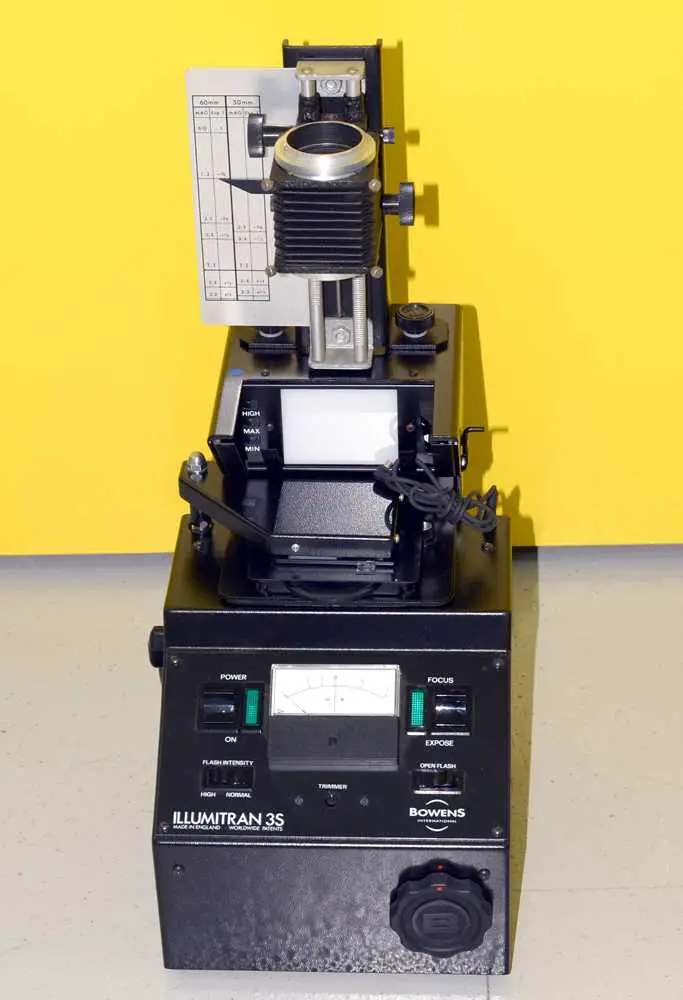
It is essentially a slide copier with a light source below and a camera stand that holds the film plane correctly in relation to the film holder to make images and these where used to make duplicate (transparencies or negatives) in the days of analog photography prior to the digital revolution. A good option I thought, as you can always improve the set up as you upgrade the camera. So thought I could just use my Nikon D850 and get a lens to sit below the bellows and all would be good. However finding one in good condition and at a responsible price is more tricky. They are available but I would want to ideally try before buying with one of these.
Next, I started to think about my Nikon D850 and that it is only 45megapixels – I mean do I really need more…? However as I have a Leica M11 and that is 61Mega pixels, thinking that would be better, I started to look at how to attach the Leica to the Bowens Illumitran, I know adaptors would do the trick, however while looking for one, I found another device from the 1950/70’s called a Leica Beoon.
Leica Beoon
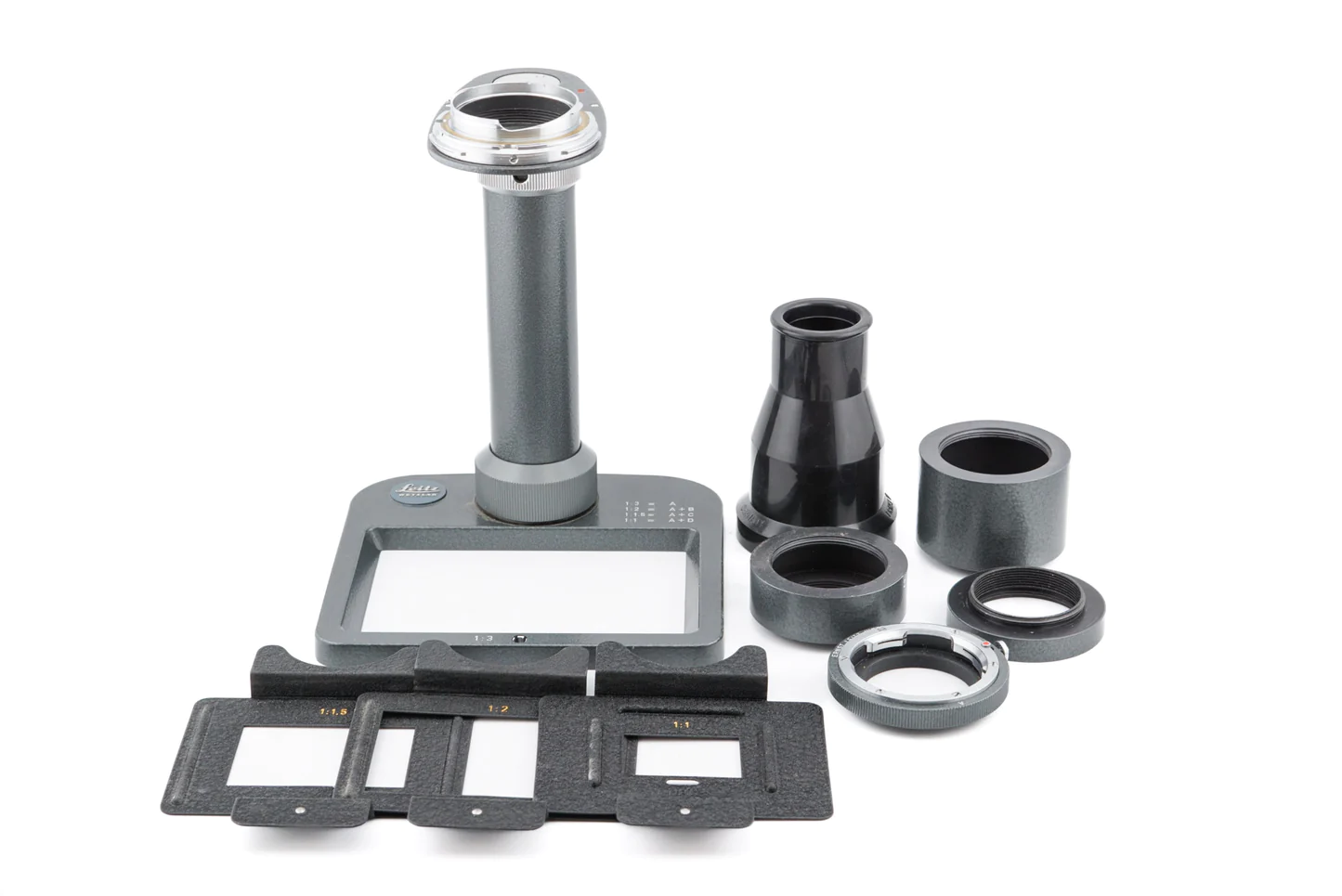
This looks great I could use my Leica M11 and a standard 50mm lens as a complete set has extension tubes to enable it to focus at 1;1 which is important to copy the images onto the camera and if I did find a complete kit I could even mount a enlarger lens on it which would probably make the set up even sharper. As mentioned, I have an enlarger with a 50mm enlarger lens and a particularly good one as well, so perhaps that would be ideal I thought. Except then I started to search for one and hit a road block, you can’t find them for less than £450 second hand and on top of that I still need to work out a light source to put underneath the Leica Beoon when I am using it. Ideally one that is flat enough that the whole set up does not wobble around when using it, otherwise I could get camera shake. So, I then found myself on various camera forums and Facebook groups listening and asking questions about what people thought of the strengths and weaknesses of scanning film versus the use of a digital camera as part of a “camera scanning” – as it is often referred to – set up.
Film Scanning
As I used to use a Imacon Scanner to make scans of my fashion images (when I was a much younger person who used to work doing fashion editorials and model tests. I thought, I would look to see if I could find a film scanner.
Consequently, I am back looking at film scanners and I find that Imacon are now Hasselblad and are no longer made (they stopped in 2019) and they were expensive when I was using them. I was hoping to find a low-cost Hasselblad Photo scanner. Now, after spending about 6 weeks on eBay, I know that low-cost and Hasselblad Photo scanners do not even come close to belonging in the same sentence, let alone the same universe.
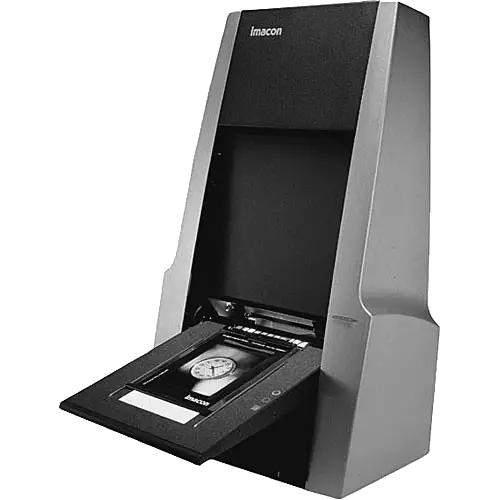
I then start looking at the review site again and thing maybe I could get myself a Nikon 5000ED scanner so back to eBay and that really shocked me as they are averaging £950 for a scanner that was probably made back in 2004/5 or before. And while I could use software from Vuescan or Silverfast, I would still be thinking about how to connect it to my nice newish M1 Macbook Pro computer. Oh and a side note, I got a real shock how expensive Silverfast scanning software is these days, back in the day it used to come bundled with flatbed scanners now it pushes up the price of a new scanner significantly. Once upon a time I might have considered pirating scanning software, maybe not now.
So still further down the rabbit hole I go. I start looking at Plustek scanners and discover that they really have not changed much since 2004, now that is a long time ago in the tech world, so I am loathe to buy one. Come on guys do a bit of research and spend a bit of money and get autofocus and a good lens in these darned things and you will sell a lot more of them. Especially with the new generation of people wanting to digitise their film images.
Next, I look at a company called Reflecta and realise that they have been rebranding their scanners from another company from Taiwan called Pacific Image Equipment, who make a scanner called PrimeFilm XAs Scanner which in Europe is rebadged as the Reflecta RPS10M and this gets okay reviews when using the Silverfast software, which is concerning as I want to use Vuescan. PIE (Pacific Image Equipment) has upgraded this scanner and it is now called the Pacific Image PrimeFilm XA Plus, So I decide to think about this one.
What to do?
Next up I do a detour onto YouTube, falling further down the rabbit whole looking again at Camera scanning and find a video by Kyle McDougall called “FilmScanning with a Digital Camera – How good is it?” where he compares his results of using a Valoi scanning kit and his old Nikon Coolscan 9000 and that was quite impressive as he has sold his Nikon Coolscan and is using the Camera scanning option. I had previously decided that a Nikon Coolscan 9000 is just too expensive so I had already decided against this option even though it is a great scanner and can do both 35mm and 120 film scans. I do have a lot of 6×7 negs in my archive, so I would be able to use this feature in a scanner. I just do not want to buy a 20 year old scanner with its connection problems.
So off to Speedgraphic and look at the Valoi options only to realise that the kit is £299 and the copy stand he is using is another £200 on top of that I still need a macro lens which is another £120 for the Nikon 60mm f2.8 AF-D Macro lens for my Nikon D850, which I would rather not use, as if I am going to do camera scanning I would rather set myself up if to use my Leica M11. So, I start thinking is there another option to get to 1:1 reproduction other than the already mention Lecia Beoon. I start thinking that I saw a 90mm Macro lens on Red Dot Cameras clearance section for a rather good price only to find that the 90mm Macro does not do 1:1 and is soft in the corners according to a few reviews I read. So another dead end.
After all this I ring up Red Dot Cameras to ask if they know of a option to get to 1:1 using Leica lens other than the Lecia Beoon only to find myself talking to someone who uses a Beoon to scan their negatives and who has a Plustek 8200iSE scanner he describes issues that he is worried about scratching his negatives when he uses the metal plates that come with the Beoon and not being so sharp as he instead using carboard mounts that he has made for himself, this does not strike me as looking good, next he says if he wants good scans he uses the Plustek and if he just needs rough and ready small scans for the web he uses his Leica Beoon set up. That then answers my question, as I had already decided that if I was going to get a scanner I would get the Pacific Image PrimeFilm XA Plus.
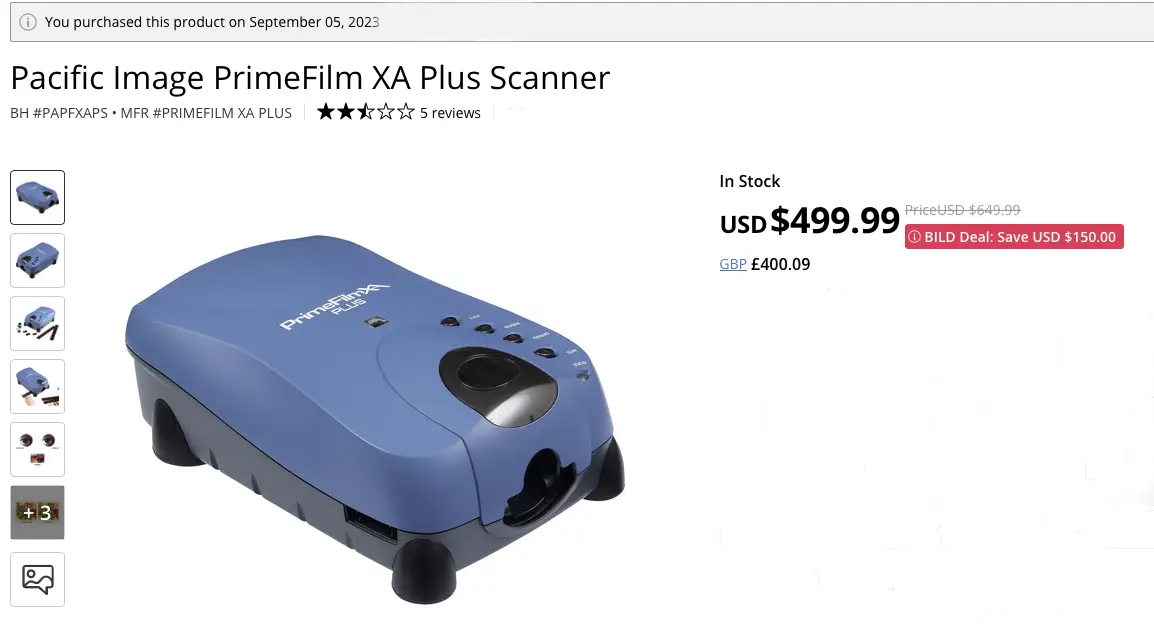
I live in London and as the scanner I decided to get is not available here in the UK, I ordered it from B&H in New York on Tuesday morning and it arrived to me in London by Lunchtime on Thursday, now that is truly impressive. The only sour note was that they had a Sale on, so I jumped onto their chat line and asked when the sale was finishing as I wanted a few days to think about it before finally getting a scanner from the USA. As I was told the sale finished the next day. I then ordered it the next day while the sale is still on, only to find that while it was being shipped to me, B&H reduced the price by another $50, how annoying is that?! I emailed them while their massive Bild conference on and I knew they would be supper busy, yet their customer service sends me an email after I had raised the point about how it had changed mentioning how I had asked on chat, they are refunding me the $50. Credit where it’s due, I have to commend B&H not only for their fast delivery, but also great customer service.
Scanner arrived.
After all this deliberation, it is Thursday evening and I am sitting here with a nice shinny new scanner that is tiny. I did not think it would be so small. I followed the instruction and downloaded the software installed the driver then brought Vuescan and installed that only to find that my new Vuescan software is not recognising the scanner, I then read the details on the Vuescan website and it says I need to have the scanner driver installed, which I had already done and it was still not recognising the scanner. Next, I try scanning with what turns out to be rather rubbish software CyberView which is supplied with the scanner and I can’t scan with Vuescan. Their website says they support the scanner, so my frustration with digitising my negatives continues.
Then for some inexplicable reason the scanner gets recognised by Vuescan and I am off. It all now works, but for some reason there seems to be a little routine that I seem to need to follow for it to work. I have to have the scanner turned off, disconnect the cable from the computer, then reconnect the cable, start the scanner, then launch Vuescan and it will recognise the scanner and work. Now, I might get a good scan out of my rather scrappy negatives. It seems like I am rather rusty on processing of film and my negatives don’t have the range of tones that they should have, so I will, it looks like, be heading down another rabbit hole on my film processing. More on that another time…
Michael W Plant is a Portrait and Social documentary photographer, he also uses street photography to visualise the social landscape. You can see his work at: www.michaelwayneplant.com
Image Credits:
Kamerastore.com kindly gave me permission to use their Lecia Beoon image and are also offering to give readers a 5% discount on a purchase of a Leica Beoon, using the code 5MMCBEOON, this is valid till the 31st October 2023.
studiomanchester.com kindly gave me permission to use their image of a Hasselblad Scanner, they offer scanner hire at very reasonable rates.
Chiswick Auctions kindly gave permission to use the image of the Bowens Illumitran. After seeing the price they sold this one for I will be looking at auction sites more often, to see if I can pick one up for a similar price.
Share this post:
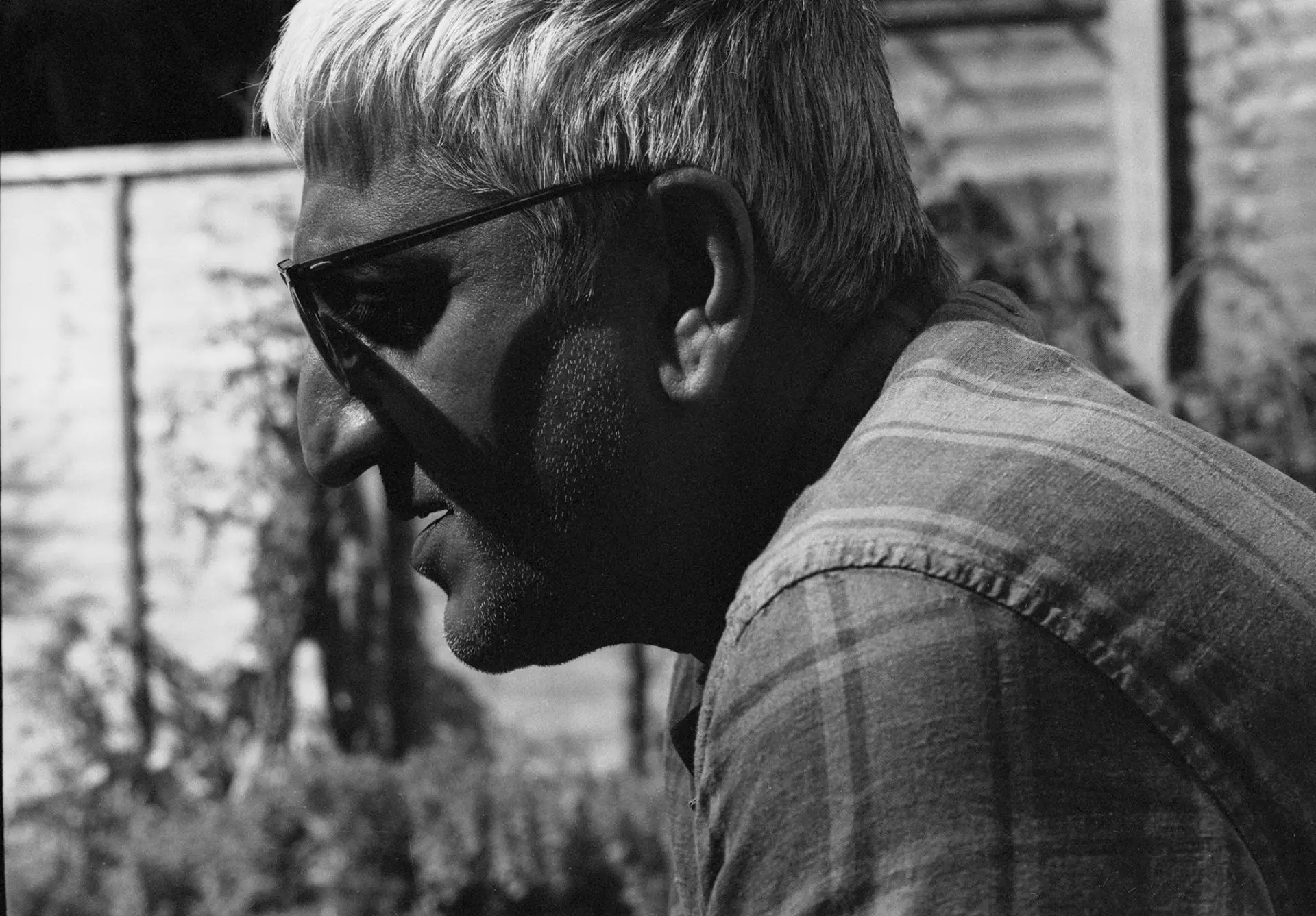
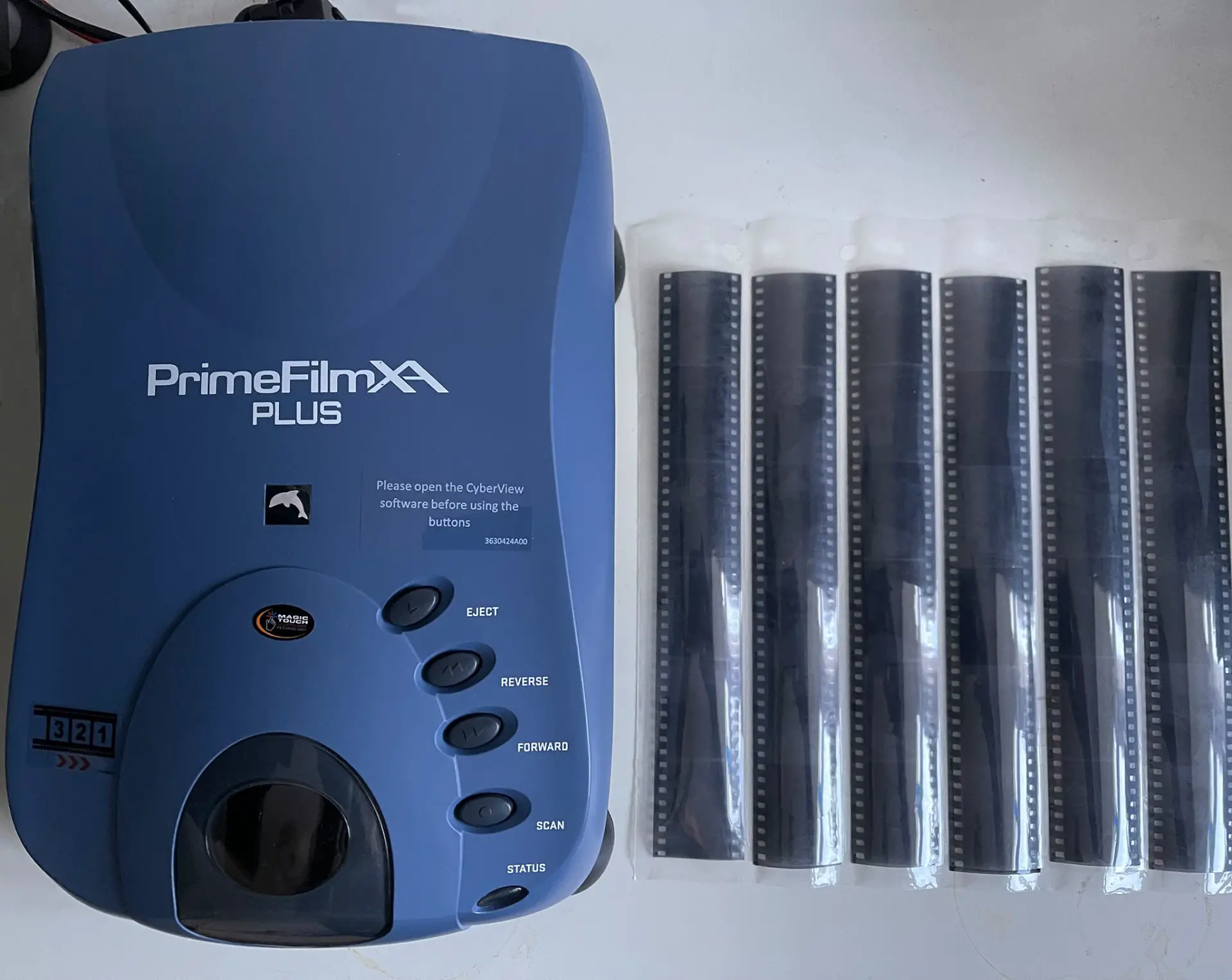
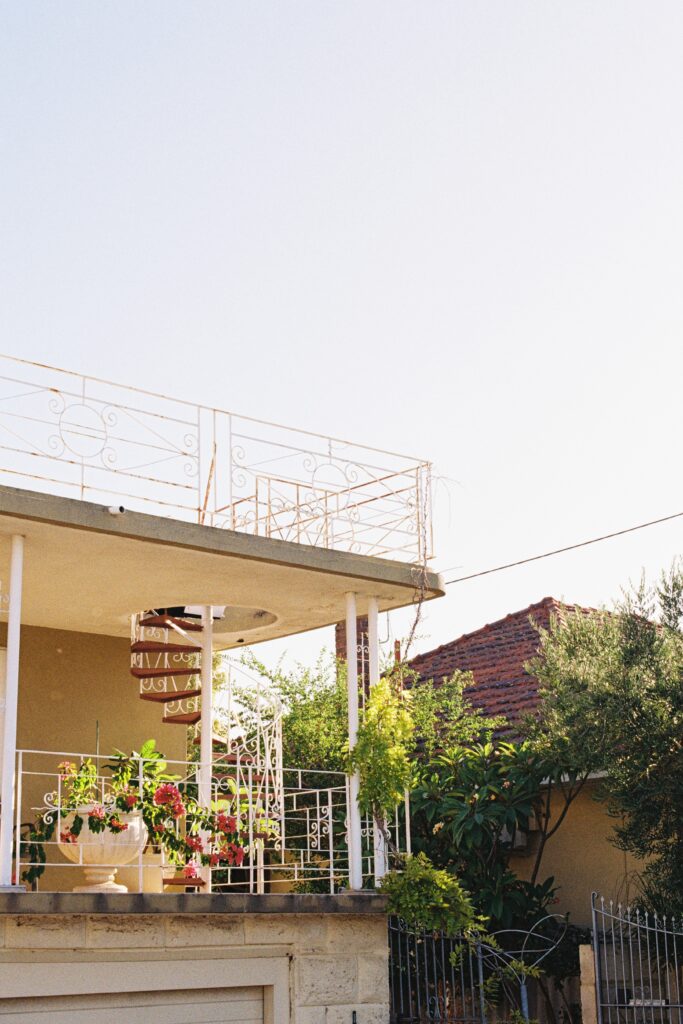
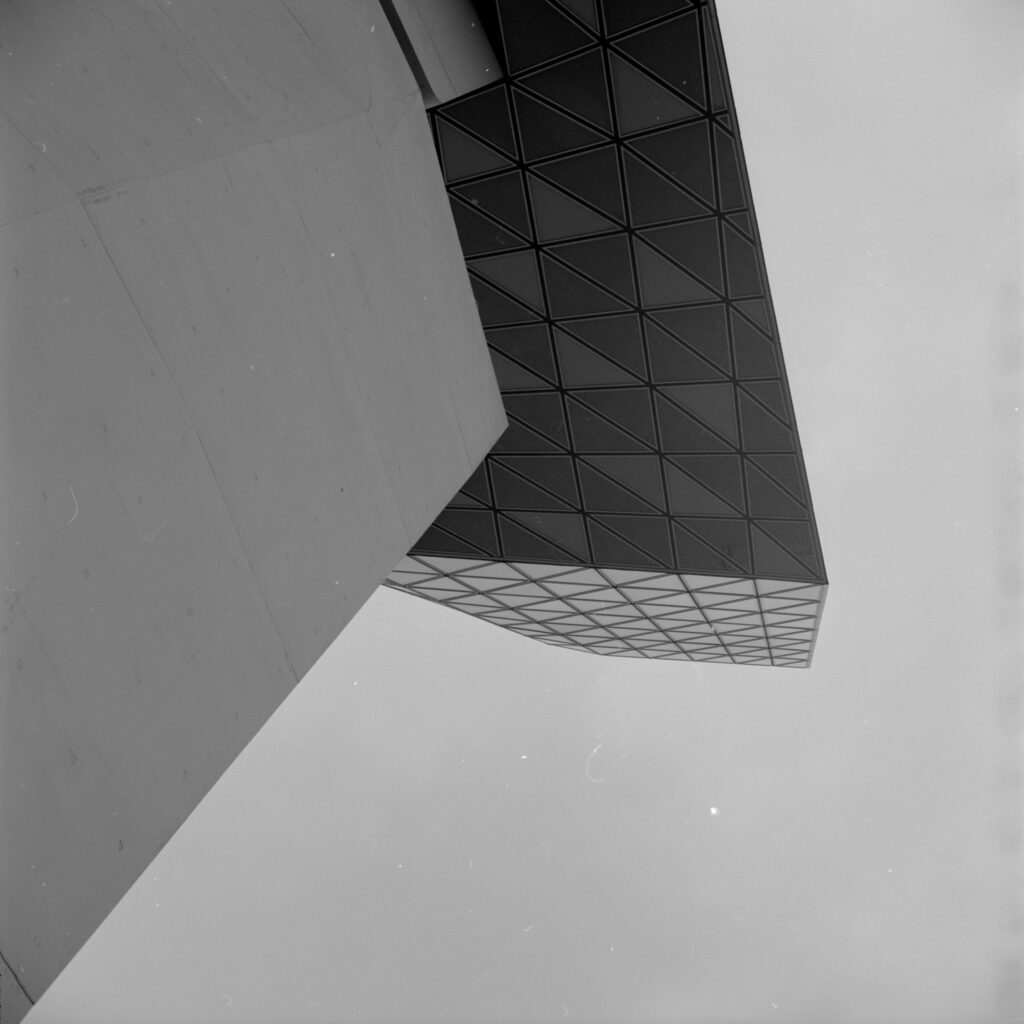
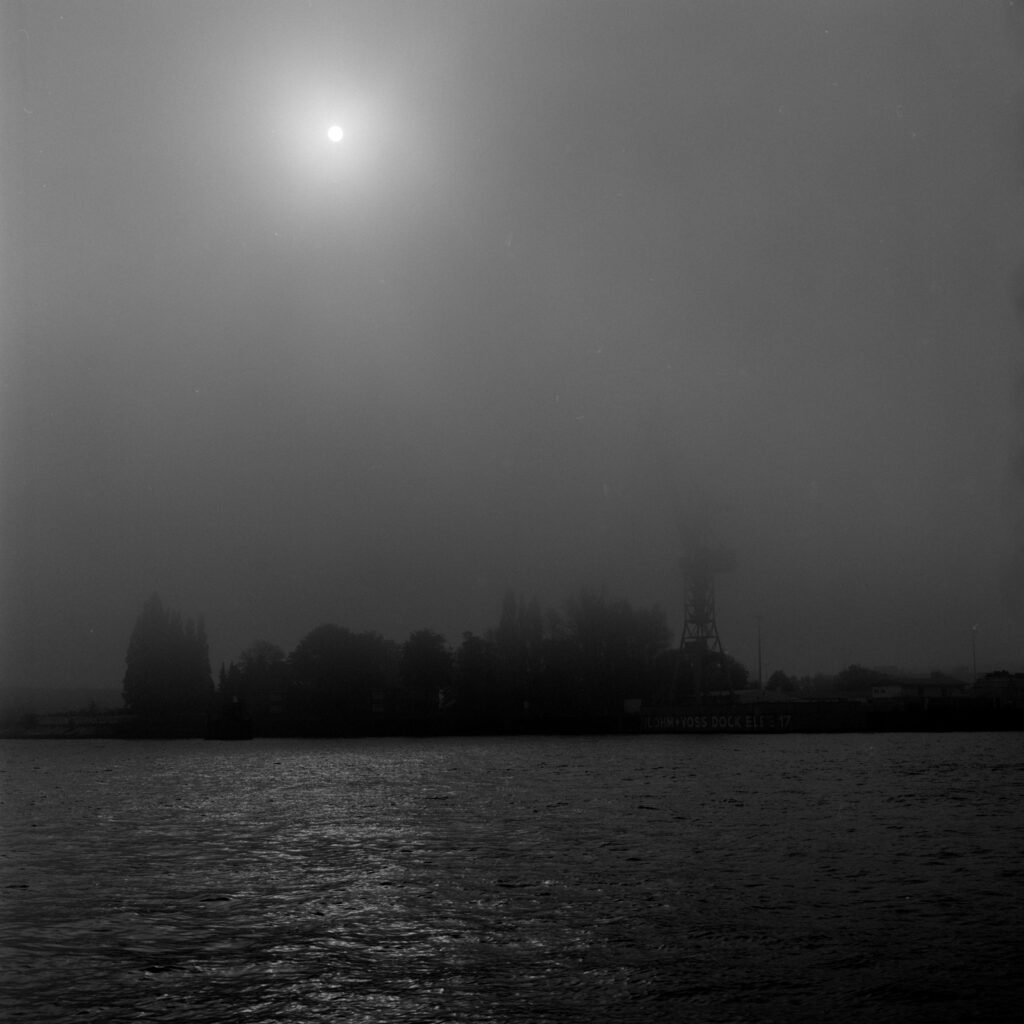
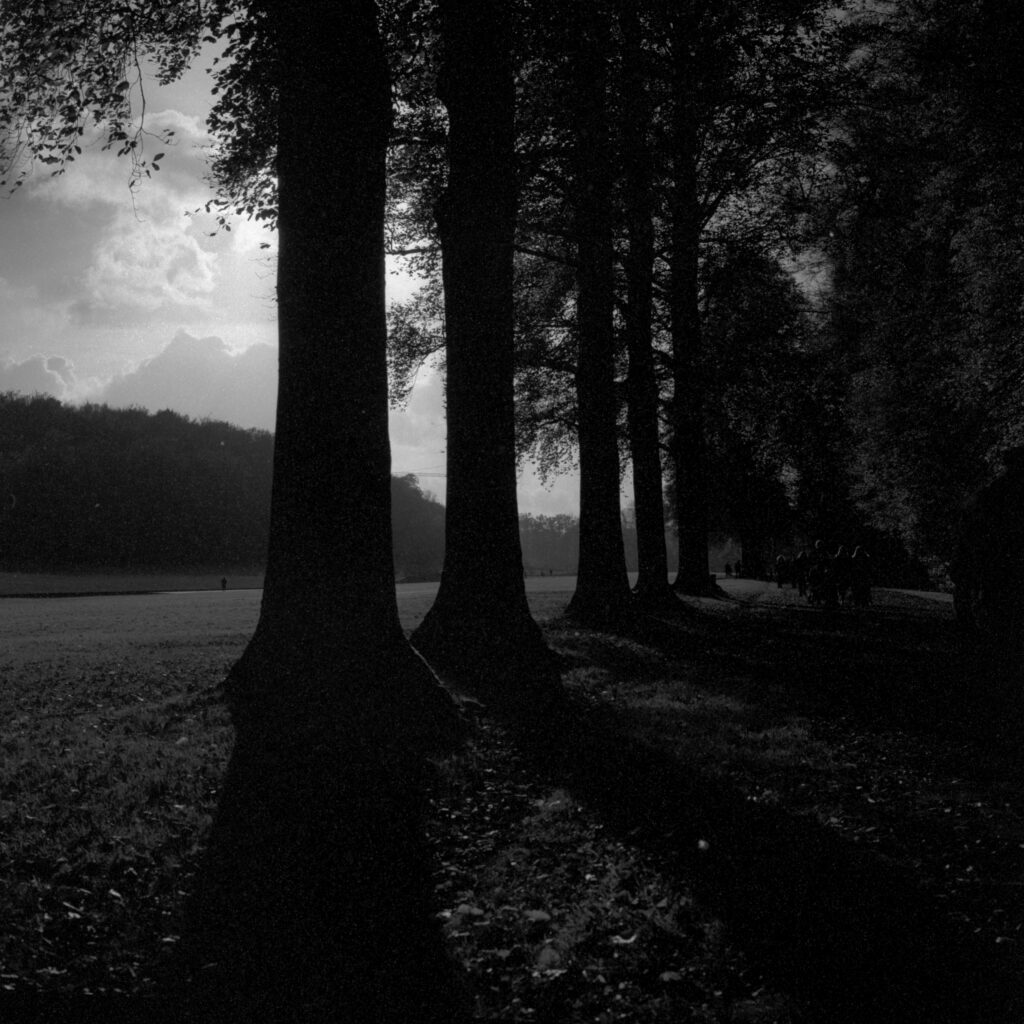




Comments
Sorin on Digitisation – a tale of a film scanning options rabbit hole
Comment posted: 22/10/2023
Comment posted: 22/10/2023
Mike Jones on Digitisation – a tale of a film scanning options rabbit hole
Comment posted: 22/10/2023
Comment posted: 22/10/2023
Art Meripol on Digitisation – a tale of a film scanning options rabbit hole
Comment posted: 22/10/2023
And with the growth in film shooting it'll continue to be an issue for many. I remember that old Illumitran. I think I used it many years ago. And I don't remember being impressed with the slide dupes.
My scanning journey started about the same time the Coolscan was released. I had 500 sheet print boxes full of slides and negative from my newspaper and concert shooting days. I bought the Coolscan 5000 and after almost 20 years I still use it. Since Nikon hasn't supported it in years I long ago tried Silverfast but never liked it and their support was very poor. I have been very happy with VueScan and like that they are constantly updating it.
But I also have 120 and 4X5 and wanted to scan those. I didn't bother till recently when I inherited the family archives of photos and negatives. I started playing with scanning with my Canon 5Ds and now R5. I tried the Valoi and some other methods and finally settled on a makeshift system that works well for me. Lately I've started creating contact or proof sheets of negatives in the same setup. The contact prints from concerts make really fun large prints.
Comment posted: 22/10/2023
Jeremy on Digitisation – a tale of a film scanning options rabbit hole
Comment posted: 22/10/2023
Make sure you buy the extended warranty on that scanner, if at all possible. I had 2 fail in the first year, and a 3rd fail near the end of the squaretrade warranty. They would always fail in the same way, where they would blink on startup and never become ready, no matter how much futzing.
As far as use, manually adjust the focus. You can do this in Vuescan and in Silverfast. The "autofocus" is useless. I tested mine with an AF1951 test frame and found it was sharpest at almost the max height. At that height it came out at ~4300dpi, which is ~24mp. I never was able, with any of them, to get the "whole-roll" scanning to work. The frame centering would drift too far by mid-roll, to the point where some frames where clipped by 20%. I spent *so* many hours trying to get that to work, as that was my holy grail.
Honestly I can't recommend this scanner due to the unreliability of it, in use and especially due to hardware failures. I prefer the XEs (if forced to traditional scan) because it ends up being faster with very similar results because you control the film placement. I would get so angry at the motorized feed on the XAs.
These days I don't trad scan except on the V850, sold the XEs, and only use the Epson for 35mm if something went wrong with the negs and I need infrared to clean it up. I've found the combination of the Valoi Easy35 w/ dust brush on my digital body, along with Filmlab App, has me getting my "scans" plus basic inversion done in < 15 minutes per roll. I've tried *everything &, Valoi stuff, the EFM v3, Negative Supply, annoying copystand madness.
I tweaked my v850 - I raised the scanning bed so the height it optimized w/o using film holders. I use two sheets of ANR glass to sandwich the negs, and scan an entire roll of 120 in two passes. That's really not too painful for that, and it yields ~31mp for 6x4.5, ~38mp for 6x6, and ~55mp for 6x8. I still use Filmlab App v3 for inversion though, and everything else is the same.
Good luck on your home-scanning journey - it is a path of pain and hopefully you get to a fast and satisfying workflow soon!
Comment posted: 22/10/2023
davesurrey on Digitisation – a tale of a film scanning options rabbit hole
Comment posted: 22/10/2023
My personal journey started with a Konica Minolta KM5400 ii dedicated scanner (actually I have two) for my collection of 35mm slides, some of which had seen better days having dated back to the 1970s. So ICE was important if I weren’t to spend months correcting 1000s of slide deficiencies by hand.
Then for my new shots (I have a growing collection of film cameras of various formats) I tried camera scanning. I acquired a Kaiser RS1 copy stand (lovely bit of kit,) with a Kaiser Slimlite Piano high CRI light source and a set of Essential Film Holders of various formats. However I found that even with a permanent setup there was too much faffing around to check it was all well aligned and then the problem of converting from negs to positive. I don’t own Lightroom so can’t uses what seems to be the preferred app Negative Lab Pro.
So I have reverted back to my KM dedicated scanner for 135. For medium format I use an Epson V850 which for 6x7 and 6x9, even 6x4.5, is good enough for me. I stress “for me”. For the occasional smaller formats eg 110 I use an external scanning company, if I produce something that I feel is worth it.
Of course sites like www.filmscanner.info point out that most dedicated scanner manufacturers’ specs tally nowhere near what they produce in practice. But there again we shouldn’t forget that the 45MP resolution of a Nikon D850, for example, comes to us courtesy of a Bayer layer and interpolation. And just how much resolution, apart from grain, is there in 135?
But as I say, it’s very much an individual’s choice. That’s why the debate will continue.
*I use Vuescan (great product which has rescued many scanners from land fill) as a driver for my 5400 but use the KM app. Never got the Vuescan app working with my 5400 despite some valiant efforts from Ed from Vuescan.
Tim Bradshaw on Digitisation – a tale of a film scanning options rabbit hole
Comment posted: 22/10/2023
Even as I connected the thing it was clear that it would never work. Quite astonishingly then, the VueScan I installed to replace my antique version just found the scanner and knew all the right things about it. VueScan also still seems to be very supported (there's a native ARM version). I think there might be some ordering-sensitivity: you need to connect the scanner, turn it on, wait for the whirring and clicking to subside and then start VueScan.
Everything that followed was just the usual nightmare of having to think about colour spaces and everything else that makes scanning, with any device, such a horror.
In some theoretical sense I am sure that I could do better than the 9000 using a drum scanner or something. In practice I found that if you overscan twice to reduce shadow noise a little the results are probably as good as the film is.
So if you have, or want to buy, one of these old scanners, they will work.
Comment posted: 22/10/2023
Comment posted: 22/10/2023
Comment posted: 22/10/2023
MichaelWPlant on Digitisation – a tale of a film scanning options rabbit hole
Comment posted: 22/10/2023
I fixed your typo that was an easy mistake to make. I suspect if I ever get around to starting to sort out my archive, I will end up wet scanning my 6x7 and 6x4.5 negs on the Epson V750 that I have and that is a really great scanner. and I will be working with my PrimeFilm XA Plus for all my 35mm films. I have 100 of rolls of film all made on Pentax 6x7 and various Mamiya 645 ProTL cameras that I would love to scan and get in to some form of order.
Peter Brixey on Digitisation – a tale of a film scanning options rabbit hole
Comment posted: 22/10/2023
Here is a list of the parts I used.
42MP SONY ALPHA A7r II which I already owned.
Nikon PB-5 Bellows with PS-5 Copier from B&H, both boxed $149 for the two.
Nikon 55mm f/3.5 Micro-NIKKOR from Pasco Camera Exchange, $69.95.
Sony to Nikon Lens Adapter from Pasco Camera Exchange, Free.
Comment posted: 22/10/2023
Louis A. Sousa on Digitisation – a tale of a film scanning options rabbit hole
Comment posted: 23/10/2023
Comment posted: 23/10/2023
David Hume on Digitisation – a tale of a film scanning options rabbit hole
Comment posted: 23/10/2023
Anyway - I think the point is; good on you for doing this, and it's good to for people to read people's experiences with various setups and see that there are many solutions that work, and to just find out from trying what it is that works best for yourself.
Thanks for a good article that I'm sure will be helpful to many.
Comment posted: 23/10/2023
fafa on Digitisation – a tale of a film scanning options rabbit hole
Comment posted: 23/10/2023
After a lot of trial and error, I've found my solution: a D7200 with its Nikkor 60 macro and Nikon's ES-1 accessory, specially designed to scan dia. and negatives. (100€)
I use the lighting salvaged from an old Epson scanner, or point my camera at the sky if I'm scanning black and white.
A 35mm black-and-white negative is about 5 to 6 MP, so the 24 on my camera are sufficient for my work.
Comment posted: 23/10/2023
Jim on Digitisation – a tale of a film scanning options rabbit hole
Comment posted: 23/10/2023
Comment posted: 23/10/2023
Comment posted: 23/10/2023
Comment posted: 23/10/2023
Jeff Maloney on Digitisation – a tale of a film scanning options rabbit hole
Comment posted: 24/10/2023
Comment posted: 24/10/2023
Kenneth Lundgren on Digitisation – a tale of a film scanning options rabbit hole
Comment posted: 24/10/2023
So ten years ago I bought Plustek 8200 SE scanner and started scan with Vuescan program. I´m also restarted with film again and did all process my self, Portra C-41 scanning, with my old Olympus OM-4 camera who I bought new in 1983.
But unfortunately the scanner broke down after three years, and I doubt if I will buy a new one.
I´m looking forward to you review about M-A since that camera has been in my radar for a long time.
Comment posted: 24/10/2023
Jumahat Leman on Digitisation – a tale of a film scanning options rabbit hole
Comment posted: 28/10/2023
Comment posted: 28/10/2023
Jumahat Leman on Digitisation – a tale of a film scanning options rabbit hole
Comment posted: 29/10/2023
Yes, Negative Lab Pro is a great option! It's really easy to use and make it so much easier and faster for me to get great results when scanning, especially for "processing" colour film. You will be scanning your film as-is (in negative format), and the inversion from negative to actual "positive" image will be done via the NLP plug-in Adobe Lightroom. There is a free trial of NLP, check it out and see if it's good for you. Ok, i forgot to mention, you'll need to have a Lightroom to use it. Good luck!
Comment posted: 29/10/2023
Russell on Digitisation – a tale of a film scanning options rabbit hole
Comment posted: 04/11/2023
BEOON was soft and a big disappointment with different lens and combinations.
Minolta 5400 is very good but only for 35mm and it's slow.
Nikon 9000 is a good compromise to the Minolta but it's huge, and if you're doing lots of scans is still slow.
My main finding through all the years are:
- Scanning large grain film needs the maximum resolution and even then still likely to have aliasing exaggerate the grain. If you're shooting new film and know you will be scanning then I'd suggest use fine grain film if at all possible.
- Film flatness is almost never achieved. Your negatives in the sleeves look very bowed. This is a battle you cannot win. So work on techniques to develop and dry your film flat. And look for films that have a reputation for drying flat. Putting under heavy books, even for years, does not work as you'd hope. Also cutting film into strips create a trauma near the cut and kills film flatness at those edges when scanning. Better don't cut next to a negative you really want to scan.
- I shoot black and white so film scratches are a pain to correct.
- Overexposed films are easier to scan than underexposed.
- Multiple passes of scanning don't add too much which a good thing as you save time
My conclusion was to shoot something like FP4 120 roll film rated at 80. Perceptol is a developer to try for HP5 rated at 200. 120 film to make the scratches easier to deal with, less enlargement size means any film flatness soft areas less noticeable too. Use Vuescan and the Nikon 9000. Funny enough the glass carrier you will want but not use too much because the increased dust removal. The much maligned pull taunt glassless negative carrier is the best.
What is missing is a way to do a whole roll at once before it's cut and sleeved. Nikon 5000 does that but I never could find or afford one. And it's only for 35mm and not 120.
Overall I've stopped this workflow as it's too involved, takes time, and I don't shoot enough so chemicals and film go off. But if you're into film and scanning this is where I landed after many many years of rabbit holes
Comment posted: 04/11/2023
John Miles on Digitisation – a tale of a film scanning options rabbit hole
Comment posted: 29/11/2023
I am in this quandary right now! I have built (80%) my darkroom in the basement, but have all along questioned myself on sticking with the photo-chemistry approach.
I realize that I must apply both disciplines to be relevant.
My biggest issue is that most of my negs are 4"x5" and the scanning options are even more limited and expensive.
If I have revelations I will pass them along.
Good, timely article!
John T Miles
Comment posted: 29/11/2023
Sanj Maghera on Digitisation – a tale of a film scanning options rabbit hole
Comment posted: 25/04/2024
Comment posted: 25/04/2024